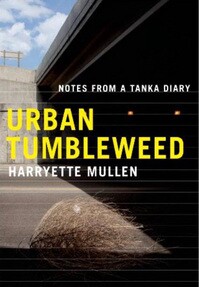 The titular poem goes like this:
The titular poem goes like this:
Urban Tumbleweed, some people call it,
discarded plastic bag we see in every city
blown down the street with vagrant wind.
everything I'm reading: Currently Reading to the next book: House of Leaves
URBAN TUMBLEWEED by Harryette Mullen
Started 9/21/2023
This week has been...shall we say...intense. It's the third week of semester and I am positively DROWNING in assignments. Who knew 19 credits would be a lot? It shouldn't be, if your computer science projects were proofread before being assigned, but at this point the cliche of computer science majors not having a social life is pretty saturated in society, so giving us a grueling project was really just my instructor's way of helping us match society's expectations. thanks!
Anyway, for one of my courses this semester, we had to read some Tanka poems from this author named Harryette Mullen. I don't know if it's just me, but I didn't know Harryette could be spelled that way. It's very cool and reminds me of how in Harrow the Ninth, Harrow is often called Harry as a fond/disparaging nickname. Anything that's a reference to Tamsyn Muir's novels (no matter how convoluted the connection is) is a win in my book
When I went to check out this book from the library, I was shocked (as I always am) by just how many books there are. Every time I go, I tell myself I'll check out and read more random things, and every single time I know it'll happen only a couple times a semester, mostly because of how busy I am.
Anyway, there's a few questions that pop up here: Firstly, what's a tanka?
You know how a haiku has the form
One: Five Syllables
Two: Now Seven Syllables
Three: Now Back to Five
Of course that's not in the true spirit of a haiku, because it doesn't have a seasonal reference or a theme about nature or any of the other characteristics that a proper haiku has, but you get the gist
fun fact, the little silly haiku's people write are more like Zappai than haiku's because they have the same numebr of syllables but without any seasonal/natural reference. There's also senryu, which focuses on funny little foibles.
Anyway, a tanka is of a similar form, but with 31 syllables. Unlike the haiku, their history is a bit more intimate. Because the form is short and sweet but just long enough to get a good message out, lovers would write tanka's to eachother, like those sonnets you were forced to read in your high school english class. In general, the form involves an image, and then a reflection on that image.
Tanka haven't quite caught on as much in the U.S. like haiku have, but the form of the tanka is most often a 5/7/5/7/7 syllable count with 5 lines when written in English.
So why Tanka and why Harryette Mullen? Well, as an assignment I have to write a tanka poem every day for the next six weeks, so I wanted to read up on her entire anthology of poems and not just the few we read in class. I've found that whenever you're given a snippet of something in class, they tend to give you the least juicy, most dense parts. Stuff you can analyze, but not always stuff you can laugh at.
 The titular poem goes like this:
The titular poem goes like this:
Urban Tumbleweed, some people call it,
discarded plastic bag we see in every city
blown down the street with vagrant wind.
Overall I like the poems towards the beginning more than I do the ones later on. Some of them are definitely more profound than others, but I think that's the nature of writing a poem every day. They aren't all going to be bangers, which is what I'm integrating into my own poems.
Here is my tanka diary: